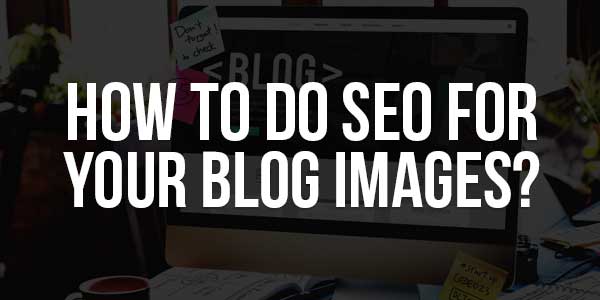
Hey there, fellow content creator! Let me ask you something: how much time do you spend optimizing your blog images?
If you’re like I was in my early blogging days, the answer is probably “not much.” I’d just find a decent-looking photo, slap it into my post, and call it a day. Then I’d wonder why my beautifully crafted articles weren’t getting the traffic they deserved.
It wasn’t until I accidentally stumbled upon a goldmine of traffic from image search that I realized what I’d been missing. One day, I noticed a steady stream of visitors coming to my cooking blog from Google Images. They were all finding my recipe for “easy chocolate cake” through a photo I’d uploaded months earlier.
That’s when the lightbulb went off. Image SEO wasn’t just some technical afterthought—it was a powerful way to get more eyes on my content.
After that discovery, I went all-in on optimizing my blog images, and the results were staggering. Within six months, my image search traffic increased by 217%. No joke!
Today, I’m going to share everything I’ve learned about image SEO so you can avoid my early mistakes and start leveraging this often-overlooked traffic source. Grab your favorite beverage, get comfortable, and let’s dive in!
Table of Contents
Why Bother With Image SEO Anyway?
I know what you might be thinking: “My blog is about words, not pictures. Why should I care about image optimization?”
Well, let me hit you with some facts that might change your perspective:
- Google Images is the second largest search engine after regular Google search
- Images appear in about 60% of all Google search results
- Properly optimized images can drive significant traffic to your blog
- Images improve user engagement and time on page
- They can help you rank for keywords you might not otherwise compete for
But here’s the real kicker: most bloggers aren’t doing image SEO properly, which means less competition for you! While everyone else is fighting over the same handful of text-based keywords, you could be quietly dominating image search results.
Think about your own search habits. When you’re looking for a “living room layout ideas” or “keto breakfast recipes,” what do you click first? Probably the images, right? That’s exactly what your potential readers are doing too.
The Foundation: Image File Names That Actually Make Sense
Okay, let’s start with the basics—file names. This is where so many bloggers go wrong without even realizing it.
Remember when you’d download an image from your camera or stock photo site, and it had a name like “IMG_45892.jpg” or “DSC_1234.png”? Yeah, Google’s algorithms have no idea what to do with that. It’s like trying to find a specific book in a library where every book is titled “Book.”
When I first started, I was guilty of this too. I’d just upload images with whatever filename they came with. It seemed easier at the time, but I was leaving so much SEO value on the table.
Here’s what you should do instead:
- Be descriptive: Use keywords that accurately describe the image
- Use hyphens: Separate words with hyphens (not underscores)
- Keep it concise: Don’t stuff with keywords—be natural
- Use lowercase: Avoid potential server issues with mixed case
Instead of “IMG_45892.jpg,” try something like “easy-chocolate-cake-recipe.jpg.” See the difference? Now both users and search engines can understand what the image is about just from the filename.
This small change alone can make a significant difference in how your images rank. It’s one of those simple SEO tweaks that many bloggers overlook, but it’s absolutely fundamental to your image optimization strategy.
Real-Life Example: From Generic to Optimized
Let me show you how I transformed my image naming strategy on my food blog:
Before: “DSC_1234.jpg” (What does this tell Google? Nothing!)
After: “gluten-free-chocolate-chip-cookies.jpg” (Now we’re talking!)
This simple change helped my cookie recipe image start appearing in search results for “gluten free cookies” within a few weeks. It’s not rocket science—it’s just giving search engines the context they need to understand your content.
Alt Text: The Secret Sauce of Image SEO
If file names are the foundation of image SEO, alt text is the secret sauce that makes everything come together.
Alt text (alternative text) serves two crucial purposes:
- It describes images to visually impaired users using screen readers
- It helps search engines understand what your images contain
I used to think alt text was just for accessibility—and don’t get me wrong, that’s incredibly important. But it’s also a powerful SEO tool that many bloggers underutilize.
Here’s how to write effective alt text:
- Be specific and descriptive
- Include your target keyword naturally
- Keep it relatively short (around 125 characters or less)
- Don’t start with “Image of…” or “Picture of…”—just describe it
- Consider the context of the surrounding content
The goal of alt text isn’t to stuff keywords, but to accurately describe the image for someone who can’t see it. If you keep that in mind, you’ll naturally create SEO-friendly alt text that serves both users and search engines.
Let’s say you have an image of a golden retriever puppy playing in a field. Instead of “dog” (too vague) or “image of a dog” (redundant), try “golden-retriever-puppy-playing-in-field.jpg” with alt text like “Adorable golden retriever puppy playing in sunny field.”
See how much more descriptive that is? Now both search engines and visually impaired users understand exactly what that image contains.
Common Alt Text Mistakes to Avoid
I’ve made plenty of alt text mistakes over the years, so learn from my errors:
- Keyword stuffing: “SEO services best SEO company professional SEO expert” — This just looks spammy and doesn’t help anyone
- Too vague: “chart” or “graph” — Describe what the chart shows!
- Missing alt text: Leaving it blank is the biggest mistake of all
- Using the filename as alt text: This is redundant and doesn’t add value
Remember: good alt text should allow someone who can’t see the image to understand its content and purpose. If your alt text accomplishes that, you’re on the right track.
Size Matters: Optimizing Image File Size
Here’s a blogging confession: I used to upload massive, high-resolution images straight from my camera without thinking twice about file size. My pages looked beautiful, but they loaded painfully slowly.
And you know what happens to slow-loading pages? People leave. Google notices. Your rankings suffer.
Page speed is a ranking factor, and images are often the biggest culprit when it comes to slow loading times. The good news is that you can significantly reduce image file sizes without noticeable quality loss.
Choosing the Right Image Format
Not all image formats are created equal. Here’s a quick breakdown:
- JPEG: Best for photographs with lots of colors and gradients
- PNG: Better for images with text, sharp edges, or transparency
- WebP: Modern format that offers superior compression (use if your platform supports it)
- GIF: Really only for animations (and even then, consider video instead)
For most blog images, JPEG will be your go-to format. It offers the best balance of quality and file size for photographic content.
Compression: Finding the Sweet Spot
Image compression is all about finding that sweet spot where file size is small, but quality is still good. You’ve got two types of compression:
- Lossless: Reduces file size without quality loss (but smaller reduction)
- Lossy: Reduces file size with some quality loss (but much smaller files)
For web images, lossy compression is usually the way to go. The quality difference is often unnoticeable to the human eye, but the file size savings can be significant.
I use tools like TinyPNG, ShortPixel, or Photoshop’s “Save for Web” feature to optimize my images before uploading. Many CMS platforms also have plugins that can handle compression automatically.
If you’re using WordPress, there are some fantastic SEO plugins that can help with image optimization alongside other SEO improvements.
Responsive Images: Looking Good on Every Device
We’re living in a mobile-first world. More than half of all web traffic comes from mobile devices, so if your images aren’t optimized for different screen sizes, you’re missing out.
Responsive images automatically adjust to fit different screen sizes and resolutions. This means:
- Mobile users don’t have to download desktop-sized images
- Images look sharp on high-resolution displays
- Page loading times improve across all devices
Most modern CMS platforms handle responsive images automatically, but it’s good to understand what’s happening behind the scenes.
When you upload an image, your CMS often creates multiple versions at different sizes. Then, using HTML’s srcset attribute, it serves the appropriate version based on the user’s device and screen size.
If you’re managing your own site, you might need to implement responsive images manually. But for most bloggers using platforms like WordPress, Squarespace, or Wix, this is handled automatically.
Structured Data: Helping Search engines Understand Your Images
Now we’re getting into the advanced stuff, but don’t worry—it’s not as complicated as it sounds.
Structured data is a standardized format for providing information about a page and classifying its content. For images, this might include information about the creator, license, or subject matter.
While structured data isn’t a direct ranking factor, it can help your images appear in rich results and give search engines more context about your content.
One of the most relevant structured data types for bloggers is Schema.org’s “ImageObject.” This allows you to provide detailed information about your images, including:
- Caption
- Creator
- License
- Content location
- And more
Implementing structured data might sound technical, but many SEO plugins can help with this. If you’re using WordPress, that list of SEO plugins I mentioned earlier can often handle structured data implementation for you.

Image Sitemaps: Making Sure Google Finds Your Images
You’ve put all this work into optimizing your images—don’t you want to make sure Google can find them?
Image sitemaps are a way to explicitly tell Google about the images on your site. While Google can usually discover images by crawling your pages, an image sitemap provides additional information and ensures nothing gets missed.
An image sitemap can include:
- Image URLs
- Captions
- Geo location information
- Image titles
- Licenses
If you already have a regular XML sitemap (which you definitely should), you can either add image information to it or create a separate image sitemap.
Most good SEO plugins will automatically generate image sitemaps for you. If you’re using Google Search Console, you can submit your image sitemap there to ensure Google knows about it.
Context Is King: Placing Images Strategically Within Content
Here’s something many bloggers don’t realize: where you place your images matters just as much as how you optimize them.
Search engines look at the context surrounding your images to understand what they’re about. An image placed next to relevant text is more likely to rank for related queries than the same image placed randomly.
When I write a blog post, I think about where images would naturally enhance the content. Then I make sure to:
- Place images near relevant text
- Use descriptive captions (which also get crawled)
- Surround images with content related to my target keywords
For example, if I have an image of a specific yoga pose, I’ll place it right next to the instructions for that pose, with a caption that describes the pose name and benefits.
This contextual approach helps search engines understand the relationship between your images and your content, which can improve your rankings for both.
Original Images: Why They Beat Stock Photos Every Time
I know it’s tempting to use stock photos—they’re convenient, professional-looking, and often free or inexpensive. But hear me out: original images almost always perform better in search results.
Think about it from Google’s perspective: they want to provide unique, valuable content to their users. If thousands of websites are using the same stock photo, why would Google rank your version over anyone else’s?
Original images, on the other hand, are unique to your site. This gives them a inherent advantage in search rankings.
Now, I’m not saying you should never use stock photos. I use them myself when I don’t have an appropriate original image. But whenever possible, try to create and use your own visuals.
The good news is that you don’t need professional photography equipment to create original images. Today’s smartphones take photos that are more than good enough for web use. With a little basic editing, you can create professional-looking images that will outperform generic stock photos.
If you’re creating original content, you might want to protect it. Understanding DMCA and how it protects your content can be valuable for safeguarding your original images.
Monitoring Your Image SEO Performance
You’ve implemented all these image SEO strategies—now how do you know if they’re working?
Thankfully, there are several ways to track your image SEO performance:
- Google Search Console: Check the Performance report to see how your images are performing in search results
- Google Analytics: Set up goals to track conversions from image search traffic
- Rank tracking tools: Monitor how your images rank for specific keywords
In Google Search Console, you can filter your performance data to show only image search results. This lets you see:
- Which images are getting impressions and clicks
- What queries people are using to find your images
- How your image search performance changes over time
This data is pure gold—it tells you what’s working and where there’s room for improvement. Maybe that infographic you spent hours creating is driving tons of traffic, while your product photos are being ignored. Now you know where to focus your efforts.
Putting It All Together: An Image SEO Checklist
I know we’ve covered a lot of ground, so let me simplify things with a handy checklist you can use for every image you upload:
- [ ] Use descriptive, hyphenated filenames
- [ ] Write concise, accurate alt text
- [ ] Compress images to optimize file size
- [ ] Choose the appropriate format (JPEG, PNG, WebP)
- [ ] Ensure images are responsive
- [ ] Place images near relevant text
- [ ] Use descriptive captions when appropriate
- [ ] Prefer original images over stock photos
- [ ] Consider implementing structured data
- [ ] Include images in your sitemap
- [ ] Monitor performance in Search Console
Bookmark this checklist and refer to it whenever you’re adding images to your blog. After a while, these practices will become second nature.
Wrapping Up: Your Images Deserve SEO Love Too
Well, there you have it—everything I’ve learned about image SEO through years of trial and error.
When I first started paying attention to image optimization, I was amazed at how such small changes could make such a big difference. That steady stream of image search traffic I mentioned at the beginning? It’s now a significant portion of my overall traffic.
The best part is that image SEO isn’t nearly as competitive as traditional SEO. While everyone else is fighting over text-based keywords, you can quietly dominate image search results with just a little extra effort.
Remember: SEO isn’t just about text content. Your images are valuable real estate that can drive traffic, engagement, and conversions. Don’t neglect them!
Now I’d love to hear from you: What’s your biggest challenge with image SEO? Have you had any success stories with image search traffic? Drop a comment below and let’s continue the conversation!
Happy optimizing, my friend!
Frequently Asked Questions (FAQs)
How Important Is Image SEO Compared To Traditional SEO?
Image SEO is incredibly important because it represents an often-overlooked traffic source. While traditional text-based SEO should still be your foundation, image optimization can bring significant additional traffic. Images appear in about 60% of Google search results, and Google Images is the second largest search engine. By optimizing your images, you’re tapping into a less competitive but highly valuable search vertical.
How Long Does It Take For Image SEO Efforts To Show Results?
Like most SEO strategies, image optimization isn’t an instant fix. It typically takes 2-4 weeks to start seeing movement in image search rankings, and 3-6 months to see significant traffic increases. This timeline can vary based on your website’s authority, how competitive your niche is, and how comprehensively you implement image SEO best practices. The key is consistency—keep optimizing every image you publish.
Should I Optimize All Images On My Blog, Even In Old Posts?
Absolutely! This is one of the easiest ways to squeeze more SEO value from existing content. Go through your old posts and optimize images that are already performing well or have potential to rank. Focus first on high-traffic posts and posts with images that could rank for relevant queries. Even updating just a few key images in older content can drive additional traffic. It’s like finding money in your pocket that you forgot was there!
How Many Keywords Should I Include In Alt Text?
Focus on one primary keyword phrase naturally incorporated into a descriptive sentence. Alt text should first and accurately describe the image for visually impaired users. If you can naturally include a relevant keyword while maintaining an accurate description, that’s perfect. Avoid keyword stuffing—writing “SEO services, best SEO company, professional SEO expert” as alt text hurts both accessibility and your SEO efforts.
Do I Need To Add Captions To All My Images?
Not necessarily. Captions are most valuable when they provide additional context or information that isn’t in the surrounding text. If an image is self-explanatory or purely decorative, you might skip the caption. But if the caption explains what’s happening in the image, cites a source, or provides helpful context, it can improve both user experience and SEO. Search engines do crawl caption text, so when appropriate, use them to provide additional relevant information.
What’s The Ideal Image Size For Blog Posts?
There’s no one-size-fits-all answer, but aim for images that are large enough to look sharp on high-resolution displays but optimized for fast loading. A good rule of thumb is to use images between 1200 and 1800 pixels wide for full-width images, compressed to under 150KB. For smaller inline images, 600-800 pixels wide is usually sufficient. Always compress your images—the goal is to find the sweet spot where quality remains good but file size is minimized.
Can Image SEO Help My Overall Blog SEO?
Definitely! While image SEO directly helps your images rank in search results, it also contributes to your overall SEO strategy. Well-optimized images improve user experience, increase time on page, and reduce bounce rates—all positive ranking signals. Additionally, images can appear in Google’s universal search results, giving you more opportunities to capture clicks. Think of image SEO as one important piece of your comprehensive SEO strategy.
Should I Use Original Images Or Stock Photos For SEO?
Original images almost always outperform stock photos for SEO because they’re unique to your site. Google favors original content, and if thousands of sites use the same stock photo, yours has less chance of standing out. That said, well-optimized stock photos can still perform well, especially if they’re relevant and not overused. When possible, create original images—even smartphone photos can work great with proper editing and optimization.
How Often Should I Update My Image SEO Strategy?
Image SEO fundamentals don’t change dramatically often, but it’s good practice to review your approach every 6-12 months. Search algorithms evolve, new image formats emerge (like WebP), and best practices get refined. Stay updated by following reputable SEO resources and periodically checking your image performance in Google Search Console. If you notice drops in image traffic, it might be time to refresh your optimization approach.
Where Can I Find Tools To Help With Image SEO?
There are many great tools available! For compression, try TinyPNG, ShortPixel, or Imagify. For SEO plugins that handle image optimization, WordPress users can check out this list of SEO plugins. Google Search Console is essential for monitoring performance. For creating original images, Canva is user-friendly while Photoshop offers advanced capabilities. Many of these tools have free versions that work perfectly for bloggers.


















I can totally relate to your early blogging experience of overlooking image optimization.
Welcome here and thanks for reading our article and sharing your view. This will be very helpful to us to let us motivate to provide you with more awesome and valuable content from a different mind. Thanks again.